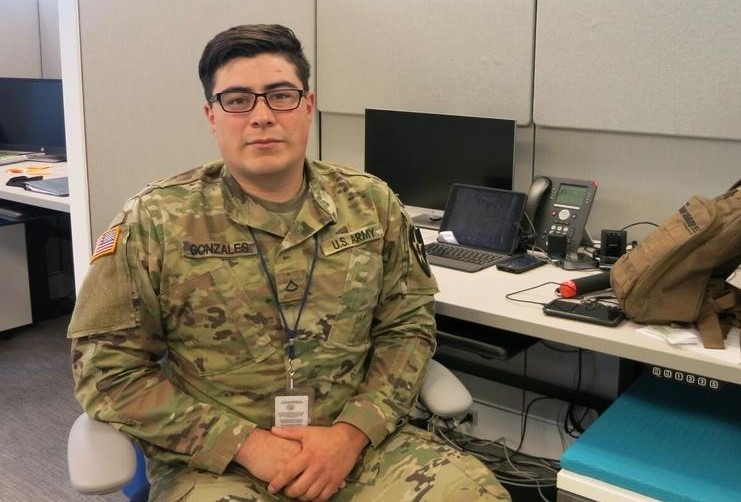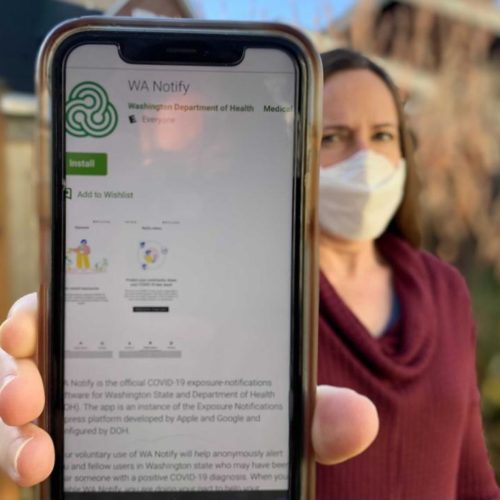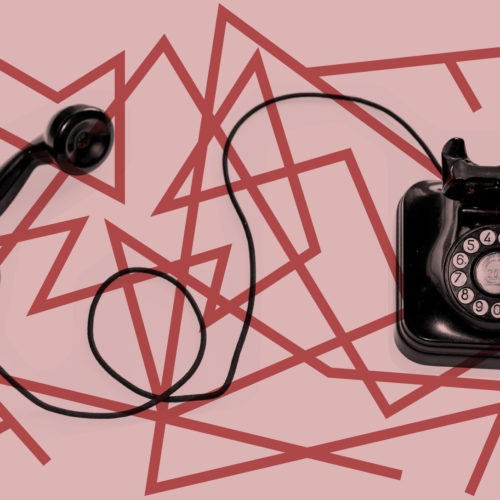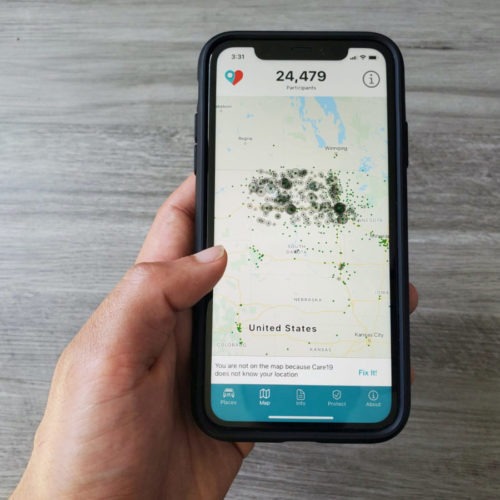
Contract Tracing Efforts Are Buckling Under The Heavy Northwest Coronavirus Caseload
READ ON
Since early in the pandemic, rapid contact tracing has been considered one of the keys to controlling the spread of the coronavirus. But in recent weeks, an overwhelming surge in new cases has let thousands of COVID-positive people and their close contacts fall through the cracks.
Contact tracers play an important role in breaking the chain of virus transmission because they call friends and associates of a newly diagnosed person and tell them to self-quarantine before those people expose anyone else. Case investigations also give public health authorities a better understanding of where people are being exposed.
Early on, the Washington State Department of Health set a goal to reach 90% of cases for an initial interview within 24 hours of diagnosis. Oregon’s goal is 95% . Neither state is anywhere close to their benchmark at this point.
ALSO SEE: Coronavirus News, Updates, Resources From NWPB
Oregon was hitting the goal as recently as mid-October, but the average success rate has since fallen to 53% because the state’s most populous counties are falling far behind. Washington state has missed its self-imposed target since at least September. In the most recent data report covering mid-November, Washington DOH case investigators only managed to reach 6% of infected persons within 24 hours of receiving positive test results.
“If we’re not doing it right, what happens is the state has to resort to more drastic measures, more serious lockdowns, more economic impact,” said Todd Myers, who examined contact tracing performance for the conservative-leaning Washington Policy Center think tank.
In an email interview, Myers said he understood the surge made it tough right now for governments. But he contended it was “indefensible” that his home state had such a poor success rate at contact tracing at a time “when it is most important to try to contain the spread because hospital beds are filling up and we’ve had to do more restrictions.”
“We too readily make excuses for government when we’re not allowing individuals and businesses who are suffering to make those same excuses,” Myers said.
In Washington state, 100 National Guard members are being called up to help with contact tracing. Some had an earlier stint with this duty when the state trained more than 200 Guard members to help temporarily with contact tracing during the first surge last spring.
WATCH: Okanogan County Hit Hard By COVID-19 In Tonasket
(Story continues below video)
In Oregon, some county health officials are now encouraging people who test positive to notify their close contacts themselves — do it yourself-style. In southern Oregon’s Jackson County, a tip sheet for people who test positive urges them to call, email or text their close contacts right away to tell those folks to stay home, away from others, and to get tested.
“Timing matters!” emphasized the local health department’s advice, which went on to explain that not everyone who tests positive would get a call from a public health worker because of the high number of people who are getting COVID-19.
In both Washington and Oregon, local public health departments typically carry the primary responsibility for case investigation and contact tracing. The state health departments provide help to handle surges as well as outreach for smaller, under-resourced counties. But now the mushrooming COVID-19 caseloads are outpacing the ability of counties large and small and their state backstops to keep up.
Data dashboards and weekly reports showed Washington state, Oregon and their biggest counties are not reaching thousands of cases. During Thanksgiving week, King County (Seattle area) alone left around 1,500 cases unassigned due to lack of capacity, according to the Public Health-Seattle & King County case investigation and contact tracing dashboard.
“We are working to improve those performance metrics so that we are reaching people more quickly and being more effective at stopping the spread,” Washington’s Deputy Secretary of Health Lacy Fehrenbach said on Wednesday. “But we do feel strain on our system when the case counts get this high.”
On Thursday, the Washington State Department of Health reported 3,538 new confirmed cases, a new record high for a single day although the agency cautioned the total may include up to 300 duplicates. Several times over the past few weeks, the daily new case number exceeded 3,000, which is more than three times higher than the peak of the previous wave in July.
The Oregon Health Authority on Thursday reported nearly 1,600 new cases, well over triple the previous peak in July.
Fehrenbach said Washington state is ramping up to 700 case investigators in its centralized surge pool to have the ability by January to cover 4,000 cases per day. As of Wednesday, the state had 374 tracers on duty or in training, including state employees, National Guard soldiers and remote contractors. By Friday, she said Washington should have the capacity to investigate 1,400 cases per day at the state level.
Once new hires and additional contract employees are trained, the Washington National Guard soldiers and state workers loaned from other agencies will be released.
Successful outreach by case investigators is a key step in making Washington state’s new COVID-19 exposure notification app work, too. In order for exposure notification alerts to be transmitted to potentially exposed people, a public health case investigator must first provide an activation code to the person who tested positive for the virus. Assuming that patient previously enabled the notification feature, they then type the code into their smartphone. That triggers a confidential, anonymous alert to other app users who recently spent time in proximity of the person who tested positive.
The Oregon Health Authority is tentatively working towards a January statewide launch of its version of the exposure notification app. Thousands of students and staffers at Oregon State University are currently giving the app a local test run. State officials have emphasized the smartphone tool is additive, not a replacement for traditional contact tracing.
ALSO SEE: Coronavirus News, Updates, Resources From NWPB
Even when public health case investigators do place timely contact tracing calls, the person at the other end frequently doesn’t pick up, according to case tracking data. This may be at least partially an unfortunate byproduct of the plague of robocalls, which lead people to ignore calls from unfamiliar numbers.
“That is part of the challenge many times,” said Washington Secretary of Health John Wiesman during a COVID-19 response update briefing on Wednesday. “I understand it. I often don’t answer a phone call that I don’t know. But if you get a message (from public health), it would be great to return that call.”
Related Stories:

Washington Launches Statewide COVID-19 Exposure App For Phones. But You Need To Turn It On
The smartphone app sends you an alert if you’ve had close contact with another user who later tests positive for the coronavirus. The Washington State Department of Health and governor are hoping that at least 15 percent of Washingtonians voluntarily activate the COVID-19 exposure notification tool. Gov. Jay Inslee said even a low level of participation could reduce infections and save lives.

Conspiracy Theories Aside, Here’s What Contact Tracers Really Do To Help End The Pandemic
Misinformation and conspiracy theories abound, from tales that people who talk to contact tracers will be sent to nonexistent “FEMA camps” — a rumor so prevalent that health officials in Washington state had to put out a statement in May debunking it — to elaborate theories that the efforts are somehow part of a plot by global elites.

3 Things The U.S. Can Do Right Now To Slow Coronavirus Spread
Seven months since cases of the coronavirus were first reported, some countries have effectively combatted the virus and brought the spread under control. The United States is not one of them. But experts say it’s not too late.















